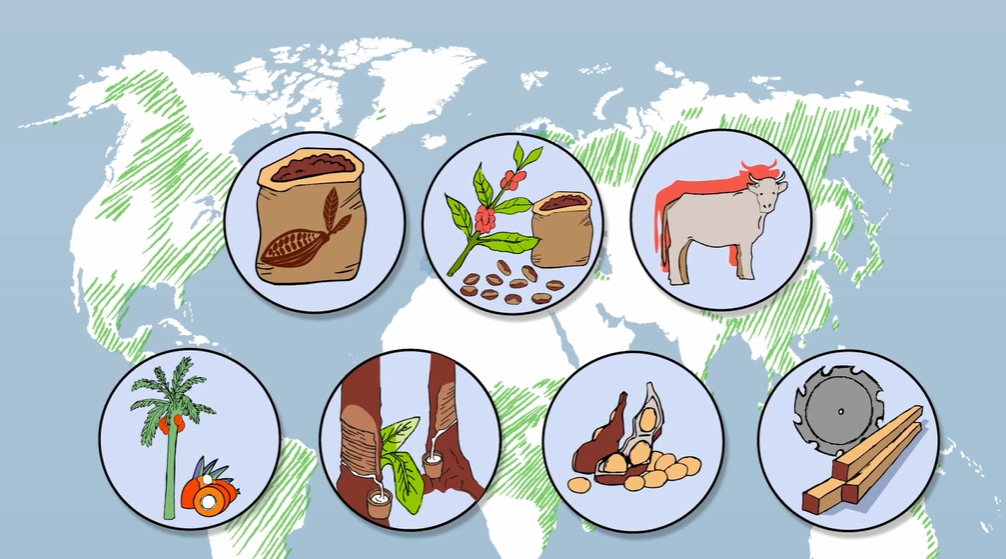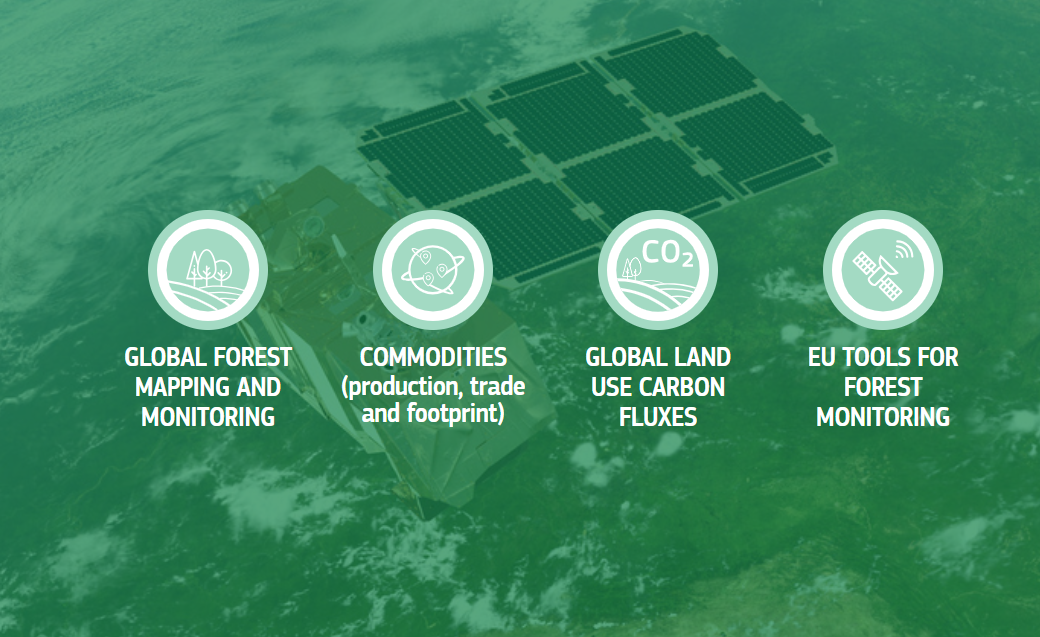The European Deforestation Regulation
The European Union is implementing new legislation ensuring products in the EU market are not linked to deforestation. While this law will not be effective until the end of 2025 due to an extension for the implementation process, it is important for operators to understand the ramifications of this regulation now and prepare accordingly. In response to global concerns about deforestation, the EU decided to take action and guarantee that products sold in the EU will not be associated with deforestation.
Photo from EU
Deforestation:
Deforestation is the large-scale transformation of forest land for agricultural use. This loss of forest cover is detrimental to all facets of the environment and society. While many are aware of the air purification and oxygen producing benefits of trees, forests play an important role in ecosystem regulation and climate change mitigation.
Forests act as carbon sinks as trees typically live for long periods of time and are able to sequester significant amounts of carbon out of the atmosphere and aid in climate mitigation efforts.
When forests are destroyed, that carbon is released. Deforestation accounts for approximately 11% of greenhouse gas emissions, directly contributing to climate change.
Each year 10 million hectares of forest is destroyed through acts of deforestation. Since 1990 over 420 million hectares of forest have been destroyed largely for agricultural purposes. This area is larger than the European Union. Taking action against deforestation is necessary for the betterment of people and the planet.
Photo by Annie Spratt on Unsplash
What is EUDR?
The European Deforestation Regulation (EUDR) is ensuring the citizens do not contribute to deforestation through product consumption through establishing new product guidelines. EUDR works to regulate seven different commodities; palm oil, cattle, soy, coffee, cocoa, timber, and rubber.
This regulation is one piece of a larger legislation plan to address deforestation. This broader plan was outlined in the 2019 Commission Communication of Stepping up EU Action to Protect and Restore the World’s Forests. The EUDR was first introduced in June 2023 with the Information System and Registration going live in November and December 2024.
Photo from EU
3 Steps for Operators to Ensure Due Diligence:
1. Collect the Proper Information:
Submitting the proper documents and data to prove that the product is not from land contributing to deforestation.
This includes land coordinates, the product quantity, and country of production.
These are known as the traceability requirements.
2. Conduct a Risk Assessment:
Evaluate the product thoroughly to ensure it is within compliance.
3. Establish Risk Mitigation:
Create and adopt a plan in case the product ends up not meeting regulatory requirements.
If part of the product is non-compliant it needs to be determined if that portion can be separated. If so, the compliant section can continue as usual.
If the non-compliant portion is unable to be separated, the entire product is therefore deemed non-compliant.
Benchmarking:
The EU has created a Benchmarking System to help operators understand if all three steps are necessary for them. This benchmarking system is based upon the country’s risk level. Low risk countries have simplified due diligence, which means there are less government checks in place. The list of countries and their risk levels will be released in June 2025.
Operators from low risk countries only need to complete step one, collecting information; they do not need to assess or mitigate risks.
On the other hand, high risk countries must complete all three steps and have more frequent government checks.
Photo from EU
What It Means to be Within Compliance:
Products must be produced not only legally, but without deforestation.
During product shipment, the compliant products must be kept separate from other goods.
Due diligence must be completed before a product is placed on the EU market. This includes the submission of a due diligence statement.
All retailers must ensure due diligence occurred at all points of the supply chain.
Photo from EU
Objectives of EUDR:
Avoid products contributing to deforestation
Work to mitigate climate change through reducing carbon emission by 32 million metric tonnes per year through ensuring these products aren’t from deforestation
Address the growing issue of agricultural expansion causing mass deforestation
Reduce global biodiversity loss
Provided Materials:
The EU has created extensive guidance and a variety of systems to make the implementation of the EUDR easy for operators. These materials include:
Photo by EU
Next Steps:
The EU granted a 12 month extension for large and medium companies to phase in the law in December of 2024, therefore making the law come into effect on December 30, 2025. The regulation will be applied to SMEs 6 months later on June 30, 2026. While some see this extension as a way to better integrate the law into companies, others see it as an easy way to lose momentum on such an important issue.






